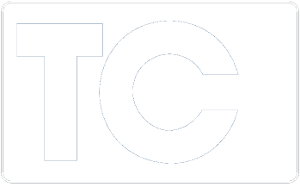Attn. Nonprofits… 4 Things to Prioritize in Your Communications Solution
Nonprofits are built on connections from donors to community members, board members to beneficiaries, and staff to clients.
Whether large or small, saving the environment or helping those in need, a nonprofit’s everyday operations hinge on its ability to link staff, volunteers, and the community. It’s vital to have seamless communication at every level to ensure mission success.
TCI supports leading associations and nonprofits across the DC region.
We recognize nonprofits have unique needs, and their communication solutions should reflect that. Here are 4 key requirements that should go into nonprofit communications systems…
1. Budget-friendly
Many nonprofits operate on shoestring budgets, dedicating their limited resources to those most in need. Cost efficiency is high on the list of priorities, so they’re looking to get the highest return on whatever they invest in their organization.
Often, nonprofits can only afford to update one operation element at a time. They may have the funds to update their phone system but still rely on their existing computers or vice versa.
Nonprofits also require multipurpose, budget-friendly solutions. Integrated technology that combines several functions in one easy-to-use package gives staff more tools to work with and less hassle.
2. Reliable
Nonprofits are often busiest in times of crisis. Whether they offer food and shelter after an emergency or provide guidance for those navigating financial difficulties, representatives must be a calming presence when their clients need them the most.
Nothing is more frustrating than waiting in a call center queue for hours only to have the line cut out or bounced from agent to agent while your case is processed. With clients and donors often revealing sensitive information, they also want to be reassured their data is safe.
Often, nonprofits serve an expanded client base with only their original, limited resources. This can lead to a frustrating disconnect between donors, workers, and the people they serve. Nonprofit staff and the people they help deserve the best communications systems so everyone can get the help they need.
3. Flexible
The people who run nonprofits often wear many hats: the executive director may double as the face of public relations; the finance manager might also hand out donations and plan events; the head of marketing could very well be the IT guru. Everyone pitches in and does what they need for the sake of the organization’s mission.
These multitasking heroes need their communications solutions to be as modern and flexible as they are. Whether they’re coordinating fundraising events from their office or conducting research in the field, they must be able to connect seamlessly no matter where they’re based.
Modern collaboration apps put teamwork in the palm of your hand – or on your mobile phone, laptop, desk phone, or tablet. With the ability to instant message, video chat, share documents, and route calls, nonprofit staff can deliver better client experiences and increase productivity.
4. Easy to Use
The average schedule in a nonprofit is packed. With their days devoted to service, staff doesn’t always have the time for complicated training or inefficient interfaces.
TCI’s Commitment to Nonprofits
Like nonprofit organizations, TCI is dedicated to improving the local communities we serve through technology that supports connections and collaboration. Our locally supported solutions support nonprofits so they can focus on fulfilling their essential missions.
Are You Exploiting Sourcewell’s Discounts for Telecom Solutions? Learn more
TCI’s affordable communications solutions can improve connections between your staff, donors, and clients. Contact us today at (703) 321-3030 or info@tcicomm.com.

